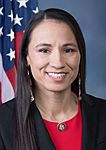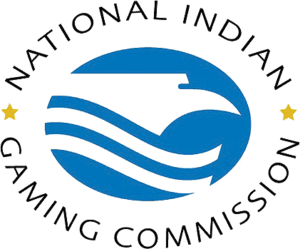Native Americans in United States elections facts for kids
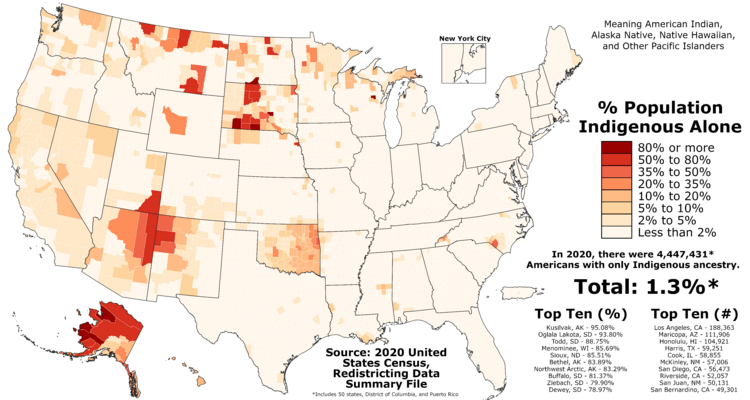
Indigenous Americans, also known as Native Americans, have a special history when it comes to voting and being involved in United States politics. They were allowed to vote in U.S. elections after the Indian Citizenship Act was passed in 1924. However, many states still found ways to stop them from voting for a long time. After much effort to fight these rules, Native Americans are now playing a bigger part in U.S. elections. Political campaigns have recently worked harder to get more Native Americans to vote. This effort showed big results in the 2020 United States presidential election. Many believe that Native American votes helped the state of Arizona vote for the Democratic candidate for the first time since 1996.
Even with this increase, generally, fewer Native Americans vote compared to other groups. They also tend to trust U.S. political groups less. They are usually more likely to vote in their own tribal elections and trust their own tribal leaders.
Contents
History of Native American Voting Rights
Stopping Native Americans from Voting
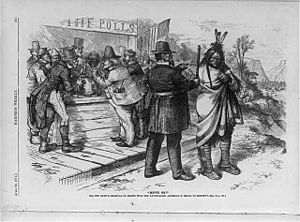
Native Americans were not given U.S. citizenship until 1924. This was when the Indian Citizenship Act was passed, which meant they could finally vote. But even after becoming citizens, some states still found ways to stop them. For example, the Arizona Supreme Court said that Native Americans living on reservations could not vote. They argued that these lands were under federal (national) control, not state control.
Other states used different reasons. They said Native Americans on reservations should not influence state laws because they were not subject to those laws. In New Mexico, before 1948, Native Americans who did not pay state taxes were not allowed to vote. Until 1962, New Mexico also argued that Native Americans on reservations were not true residents of the state. Utah used a similar argument in 1956. The Utah Supreme Court even said that Native Americans could not be good citizens because they might not be able to read or were separate from American society. Some states only recognized Native Americans as citizens if they gave up their tribal connections and lived like other Americans.
In South Dakota, after the Snyder Act was passed, Native Americans were still denied voting rights and the right to hold office until 1940. Ways to stop them included saying they were not citizens or blocking them from voting places. Some areas in South Dakota continued these unfair rules until as late as 1970.
Laws Protecting Voting Rights
Many laws have been passed to help Native Americans vote. One of the first laws that offered some protection was the Dawes Act in 1885. However, this law mostly tried to make Native Americans adopt Western culture. It also led to a huge loss of Native lands.
Many Native Americans were still not citizens until the Indian Citizenship Act was passed in 1924. Even then, some states still denied them the right to vote. They claimed Native Americans lived on federal lands, did not pay property taxes, or took part in tribal elections.
The Voting Rights Act of 1965 was a very important law. It made sure all Native Americans had the right to vote. Still, some state governments tried to stop them from using this new right. In 1975, changes were added to the Voting Rights Act. One change, Section 203, required election materials like ballots to be available in Native American languages. This was not always followed well by states like South Dakota until recently.
Important Court Cases
The question of whether Native Americans were U.S. citizens led to many court battles. In 1884, a case called Elk v. Wilkins went to the U.S. Supreme Court. The case asked if Native Americans could be U.S. citizens while also keeping their tribal citizenship. The Supreme Court decided that Native Americans could have dual citizenship. This meant they could be citizens of both their tribe and the U.S.
Even though the Dawes Act and especially the Snyder Act gave citizenship to all Native Americans, states still tried to stop them from voting. A 1928 court ruling in Arizona, called Porter v. Hall, even said Native Americans were not smart enough to vote. Many other states used this ruling to deny Native Americans the right to vote.
The Role of Native American Women
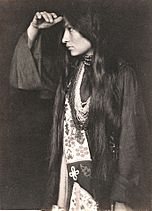
Native American women have been important in the fight for women's political rights for a long time. As early as the 1810s, groups of Cherokee women spoke up for equal rights. After the 1920s, when the 19th Amendment (giving women the right to vote) and the Snyder Act were passed, Native women continued to push for their voices to be heard. By the 1930s, some Native tribes, like the Ho-Chunk, already gave their women full voting rights.
Today, Native women often play a more active role in politics than Native men. Studies show that Native women feel a stronger sense of civic duty. This drive has put women at the front of efforts to get more Native Americans to vote. However, Native women still hold very few government positions. This is often because they have fewer resources compared to men.
How Many Native Americans Vote
Comparing U.S. and Tribal Elections
Experts have noticed a big difference in how many Native Americans vote in U.S. elections compared to their tribal elections. The difficult history between the United States and Native Americans is one reason for this difference. Because of this history, Native Americans often trust their own tribes more than the U.S. government. Many Native Americans believe their rights are better protected by their own tribe.
Efforts to Get More People to Vote
Voter turnout for all minority groups, including Native Americans, is lower than for the majority of people in the United States. One study showed that Native Americans were 51% less likely to vote than people of other races. Other things that affected Native American voter turnout were family income and education. As Native Americans gained more sovereignty (self-rule) and pride in their cultural identity, more of them started to vote.
Many different ways have been used to get more Native Americans to vote. One direct way was campaigning through radio, as many Native Americans listen to the radio. When campaigns started using radio, more people got involved in politics.
Voter registration drives were also a good way to get Native Americans to vote in non-tribal elections. The Navajo were among the first to use this method. This led to a big increase in voter turnout in the 1970s.
Native Americans in Politics
Voting in National Elections
It is hard to find information about how Native Americans voted in early elections. This is because Native Americans only recently became more politically aware, especially after the civil rights movements of the 1960s and 1970s. Even today, Native American votes are often grouped into an "other" category in studies. More specific data about Native votes has been collected in recent elections, like the 2020 election.
Generally, recent studies show that Native Americans have mostly supported the Democratic Party. They are also less likely than other groups to vote for a "split ticket" (voting for different parties for different offices). This is a trait they share with other minority voters.
Native Americans likely started supporting the Democratic Party, similar to African Americans, because they were included in New Deal programs. These programs helped many people during the Great Depression. One Native American person remembering the New Deal Era said, "We had it good once he Roosevelt was in charge. The New Deal was a big deal here." Also, some Republican senators were linked to past policies that tried to end Native American tribes' special status. This might also be a reason for their preference. However, Native Americans did have somewhat good relationships with Republican presidents Richard M. Nixon and Ronald Reagan.
Earlier research from 1979 and 1982 showed that Native Americans were not always strongly tied to one party. Some tribes, like the Navajo, even preferred the Republican Party in the past, though this has changed. Between 1984 and 1996, support for the Democratic Party among Native Americans never dropped below 75%. In general, Native Americans in areas where only Natives live are more likely to vote Democratic than in mixed or all-white areas.
Recent exit polls showed that more Native Americans were willing to vote for Donald Trump in the 2016 United States presidential election compared to four years before. However, the Native vote made a huge difference in the next election, strongly supporting Joe Biden. Republican and conservative politics tend to do better with Native Americans in more mixed areas, especially rural ones, as seen in elections as recent as 2020.
Even though most Native American voters support the Democratic Party, their overall political beliefs are more complex. Studies show that Native Americans tend to be political moderates and hold traditional values. For example, studies in New Mexico showed that Native voters there value "equality and helping those less fortunate." But they also value "self-determination and libertarianism" (freedom for individuals). This study also said they value "Reaganism" (ideas linked to Ronald Reagan).
Even before the big increase in voter turnout in 2020, political experts had seen that the Native vote could be very important. Research from 1997 suggested that Native Americans could be swing voters in states where Democratic and Republican voters were fairly equal, like Montana. While these states now seem more Republican, the case of Arizona in 2020 (a state once thought of as "solid Republican") has made experts focus again on the "swing power" of Native American voters.
Voting in State Elections
Native Americans are not only unlikely to "split ticket" vote, but they have also helped Democrats win state elections. Even before 2020, Native voters gave Democrats a big advantage. Political research says the Native vote was a major reason why Democratic senators like James E. Murray of Montana in 1954, George McGovern of South Dakota in 1962, and Maria Cantwell of Washington in 2000 were elected. Maria Cantwell still holds office today.
Many states with Native reservations are now seen as "solid Republican" states. Experts believe that Native Americans have not been able to help Democrats win more races in these states because of historical voter suppression. Another reason is that if turnout is low for national elections, it is usually even lower for state elections. This is a common trend for most American voters. However, efforts by officials in states with many Native people greatly increased voter turnout for governor elections, especially in the 1970s. This has helped Native turnout increase overall.
Native Americans as Politicians
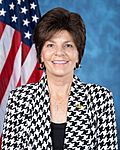
Over time, Native Americans have gained more representation as they have overcome legal challenges to their voting rights. A past lack of representation can be linked to Native Americans having fewer resources. However, in recent years, there has been a clear increase in Native American representation, especially in the lawmaking branch of government and in local offices.
The first Native American U.S. senator was Hiram Rhodes Revels (R-Mississippi), chosen by the Mississippi state legislature in 1870. Revels was also the first African American legislator. Two years later, Richard H. Cain (R-South Carolina) was the first person of Native American descent (and also African American) elected to the House of Representatives.
Before becoming vice president, Charles Curtis (R-Kansas) became the first directly elected Native American senator in 1914. This was the first year senators were elected by popular vote, after the Seventeenth Amendment to the United States Constitution was passed. When he became vice president, Curtis reached the highest elected office a Native American has ever held in the U.S., a record he still holds. No other Native Americans were elected to Congress until Ben Nighthorse Campbell of Colorado was elected to the House of Representatives in 1986, and then to the Senate in 1992.
As legal battles against voter suppression were won, Native Americans played a bigger role in electing their own representatives. Important changes included local elections in McKinley County, New Mexico in 1972; Coconino County, Arizona in 1980; San Juan County, Utah in 1986; and in areas across the Navajo reservation in 1990. In 1990, five Navajo candidates ran with the slogan "it’s our turn." For state legislatures, the number of state lawmakers who are Native Americans tripled between the 1980s and 2018. However, 64% of these representatives live in only five states.
As of March 2021, there are four Native Americans holding seats in the House of Representatives. Three of them are Republicans, and one is a Democrat.
- Davids was the first openly LGBTQ+ Native American elected to Congress.
Native American Interest Groups
Native Americans have also been involved in lobbying, which means trying to influence lawmakers. Since the 1980s, groups focused on Native American issues have had a lot of influence in passing laws about gambling and gaming laws. A good example is the National Indian Gaming Commission, started in 1988 after the Indian Gaming Regulatory Act was passed. This group and others have helped Indian gaming make up a large part of money given to political campaigns by gaming companies. Studies also show that when these groups make certain issues public, it helps more Native Americans turn out to vote. In election years when specific gaming laws are on the ballot, Native Americans are more likely to vote.


